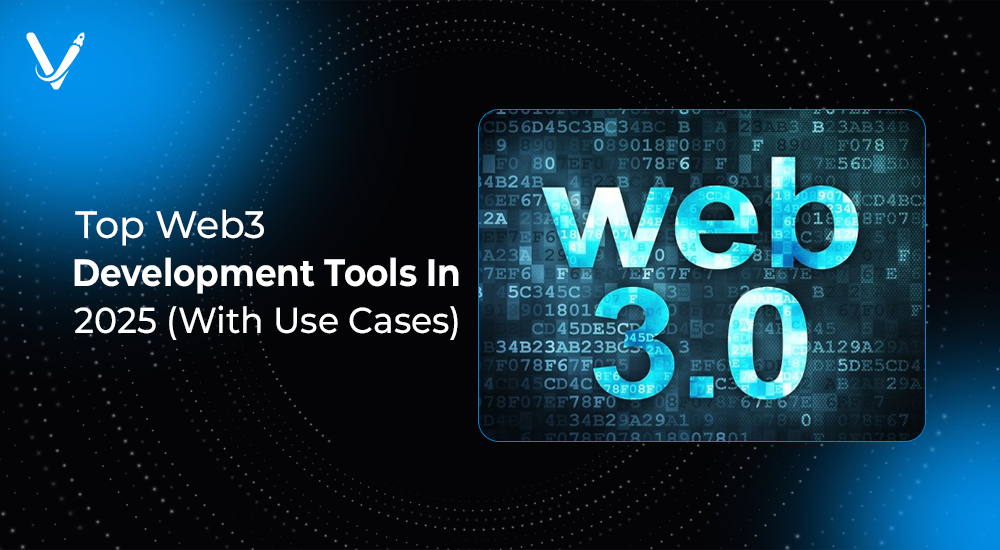Top Web3 Development Tools in 2025 (With Use Cases)


- Jun 24, 2025
The Web3 ecosystem has rapidly transitioned into a cornerstone of digital infrastructure, empowering decentralized applications (dApps), smart contracts, and trustless economies. By 2025, Web3 is no longer a buzzword but an essential paradigm shift in how users engage with digital services. For developers navigating this evolving landscape, having the right tools is critical. These tools not only streamline the creation and deployment of decentralized platforms but also ensure that security, scalability, and usability are never compromised.
In this article, we will explore the most impactful and widely used Web3 development tools of 2025, each paired with real-world applications to illustrate their value.
Foundry has risen to prominence due to its emphasis on performance, flexibility, and a developer-first design. Built using Rust, Foundry allows developers to write, test, and deploy Solidity smart contracts with exceptional speed. Its command-line tools—such as 'forge' and 'cast'—enable comprehensive testing, deployment, and interaction with Ethereum nodes.
A decentralized lending protocol used Foundry to perform over 1,000 fuzz tests per hour, identifying and resolving edge-case bugs before mainnet deployment, reducing potential vulnerabilities significantly.
Hardhat remains one of the most accessible and powerful Ethereum development environments in 2025. Known for its strong plugin ecosystem and JavaScript/TypeScript compatibility, it simplifies the process of writing, debugging, and deploying smart contracts. Developers benefit from its built-in network simulation, error stack traces, and test coverage reports.
An NFT art marketplace used Hardhat to simulate multi-signature minting operations across different user roles before pushing their contracts to Ethereum mainnet, ensuring the robustness of royalty logic and creator attribution.
RainbowKit, paired with Wagmi, has become the go-to choice for developers needing seamless wallet integrations in their Web3 applications. RainbowKit provides elegant UI components for wallet onboarding, while Wagmi offers powerful, type-safe React hooks for Ethereum operations. The duo dramatically reduces the complexity of wallet connectivity and enhances user experience.
A GameFi platform used RainbowKit to enable over 25,000 *users to connect via WalletConnect, Coinbase Wallet, and MetaMask, drastically reducing churn and onboarding time by 40%.
Thirdweb is revolutionizing how developers interact with blockchain by offering a no-code/low-code environment for deploying Web3 functionalities. It offers pre-built smart contracts for NFTs, tokens, marketplaces, and more, which can be deployed and managed through a graphical dashboard.
An indie music label used Thirdweb to launch NFT music drops with dynamic metadata, enabling artists to control pricing, access, and revenue sharing—all without touching a line of Solidity code.
Alchemy provides the backend power behind many top-tier dApps. Known for its reliability and real-time analytics, Alchemy abstracts away the complexities of managing nodes, while offering tools like Enhanced APIs, Webhooks, and Debug APIs to streamline blockchain development.
A DeFi risk management platform utilized Alchemy’s Enhanced API to track token price movements in real-time, enabling automatic collateral liquidation for under-collateralized loans.
Infura continues to be a dominant force in Web3 infrastructure, offering robust API access to Ethereum, IPFS, and other decentralized networks. Its global infrastructure and enterprise-grade SLAs make it the backbone of many critical applications.
A censorship-resistant blogging platform leveraged Infura’s IPFS services to store and retrieve content without relying on centralized servers, ensuring content persistence and transparency.
Security is paramount in Web3, and MythX provides automated analysis for detecting vulnerabilities in smart contracts. Integrated with development tools like Hardhat and Truffle, it gives developers detailed insights into potential risks before contracts go live.
A decentralized lottery project discovered a critical access control flaw through MythX, preventing an exploit that could have cost users over $1.2 million.
Slither, developed by Trail of Bits, is a powerful static analysis framework for Solidity smart contracts. It offers quick insights into code quality, inefficiencies, and known security patterns.
A DAO treasury manager embedded Slither checks into their GitHub Actions pipeline to enforce code quality standards and detect logic errors early in development.
Web3Auth offers a seamless authentication flow using OAuth providers like Google, Facebook, and Apple. It combines non-custodial wallet access with a familiar login experience.
An educational dApp used Web3Auth to let students log in with Gmail, increasing sign-ups by 60% compared to MetaMask-only options.
Ceramic enables user-controlled data streams and integrates with IDX for decentralized identity management.
A health-tech app used Ceramic to store patient records and permissions on-chain, giving patients full data control.
Snapshot allows DAOs to conduct gasless voting using off-chain mechanisms while retaining full on-chain token integrity.
An NFT community used Snapshot to vote on future art collaborations, with over 5,000 votes per proposal.
Tally provides dashboards for tracking DAO proposals, delegations, and outcomes with on-chain execution.
A protocol DAO managing $300M treasury used Tally to coordinate funding rounds and ecosystem grants.
LayerZero powers secure messaging between blockchains, enabling dApps to become chain-agnostic.
A DeFi protocol used LayerZero to allow liquidity pooling across Avalanche and Arbitrum from one dApp.
Axelar supports cross-chain contract calls and token transfers using a unified protocol.
A multi-chain NFT platform relied on Axelar to mint and transfer assets across Cosmos, Ethereum, and BNB Chain.
Biconomy’s meta-transactions reduce friction by letting dApps pay for gas, improving UX.
A gaming dApp used Biconomy to handle daily microtransactions without user wallets running dry.
Chainlink Functions bridges APIs and blockchains, triggering smart contracts using external data.
An agri-insurance company used Chainlink Functions to automate payouts based on weather data.
Web3 is entering its golden age in 2025. The barrier to building powerful dApps is lower than ever thanks to a robust ecosystem of tools—from smart contract compilers to wallet SDKs, cross-chain bridges to DAO dashboards. These tools allow both startups and enterprises to innovate confidently in a decentralized world.
Vasundhara Infotech is your partner in Web3 transformation. With deep expertise in blockchain development, we help you build secure, scalable, and intuitive solutions that stand the test of time.
Copyright © 2025 Vasundhara Infotech. All Rights Reserved.
